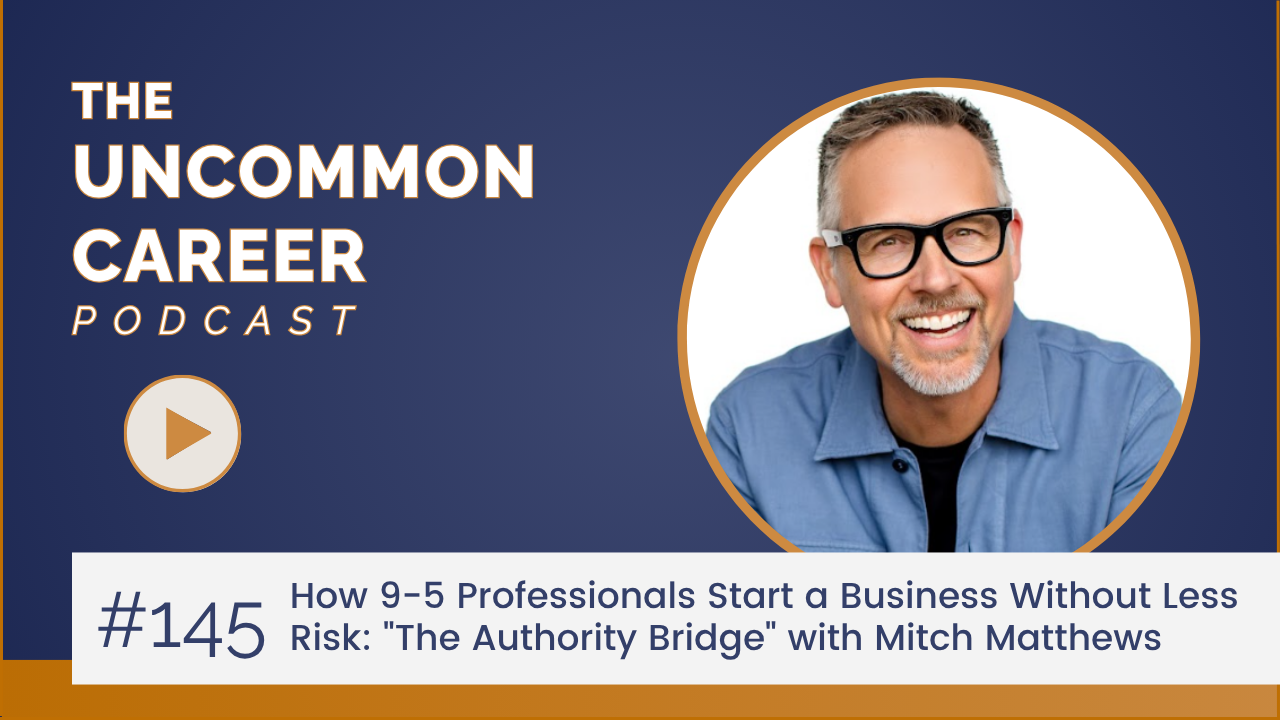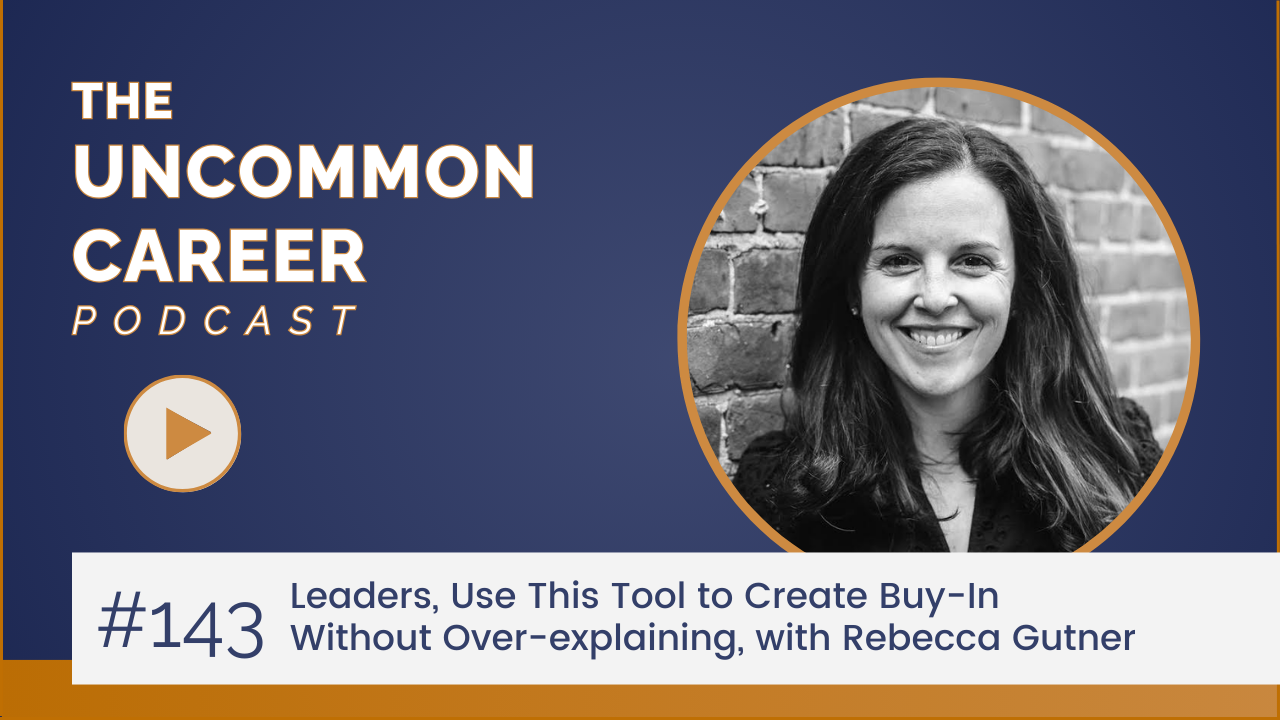119. Take a Test to Get Hired? Learn About the Hogan Assessment from Porschia Parker Griffin, PCC
Jul 08, 2025
Take a Test to Get Hired? Understanding the Hogan Assessment
Job seekers often find themselves facing one unexpected step in the hiring process: an assessment test. And for many, the Hogan Assessment is the one they never saw coming. Used by roughly 75% of Fortune 500 companies in the United States, this assessment isn’t just another personality quiz. It’s a tool designed to predict on-the-job performance and help employers select the best fit—not simply describe what kind of person someone is.
In this conversation with Porschia Parker Griffin, the discussion centers on what the Hogan Assessment really is, how it works, what employers are looking for, and how candidates can navigate it thoughtfully and confidently.
|
Listen on your favorite podcast app: |
| |
What Makes the Hogan Assessment Different
Unlike many familiar personality tests, the Hogan was built by industrial and organizational psychologists—experts in workplace psychology.
This difference matters.
-
Legally Defensible: Hogan is statistically validated to predict job performance, making it one of the few assessments employers can legally use in selection without risking discrimination lawsuits.
-
Predictive, Not Just Descriptive: While other tools may describe preferences or styles, Hogan aims to predict how someone will perform in specific roles.
-
Widely Used: Its use spans industries, but it's especially common in executive searches, sales hiring, and customer service recruitment.
Employers aren't just trying to learn what kind of person someone is—they're trying to figure out how well they’ll actually do the job.
What Employers Look For in Hogan Assessments
One of the biggest mysteries for candidates is what employers are even evaluating when they send out these tests.
Hogan assessments don’t just spit out a label or category.
Instead, they measure patterns that correlate with workplace success.
Employers can compare a candidate’s profile with benchmarked profiles of employees who have succeeded in similar roles.
This means what’s “ideal” depends on the job:
-
Sales roles often prize profiles with assertiveness and energy.
-
Customer service might look for patience and sociability.
-
Executive roles use the assessment to spot both strengths and potential derailers under stress.
It’s not about good or bad personalities—just fit for the role.
The Three Components of the Hogan Assessment
The assessment is actually three tools in one, each offering a different perspective:
1. Hogan Personality Inventory (HPI)
-
Often called the “bright side” of personality.
-
Measures everyday tendencies that help people get along and succeed.
-
Predicts typical behavior when things are going well.
2. Hogan Development Survey (HDS)
-
Explores the “dark side” of personality.
-
Identifies tendencies that can emerge under stress or pressure and limit success if unmanaged.
-
Helps employers see what might cause problems in high-stress situations.
3. Motives, Values, Preferences Inventory (MVPI)
-
Measures what drives and motivates someone.
-
Helps match personal values to organizational culture.
-
Predicts satisfaction and long-term fit in a role or company.
Depending on the employer’s goals, candidates might take one, two, or all three components.
Self-Report—But with Safeguards
A common question is: How accurate can this really be if people answer it themselves?
Hogan includes built-in checks to detect patterns that suggest insincere responses—like selecting the same answer repeatedly. Trying to “game” the test by guessing what the employer wants often backfires.
Instead, it pays to answer truthfully.
The assessment isn’t about ranking people on a universal good/bad scale—it’s about finding alignment.
A candidate who fakes answers to fit a role that doesn't suit them might land the job but end up unhappy or struggling to perform.
Fit Over “Winning”
One of the biggest mindset shifts for candidates is understanding there’s no one “right” way to take this test.
-
Companies use Hogan to predict fit, not to assign moral value or intelligence.
-
Misalignment isn't a failure—it’s valuable insight.
-
Both employer and candidate benefit when the role is a strong match.
Trying to “beat” the assessment risks placing oneself in an environment that doesn’t match natural strengths or values.
That’s why many coaches encourage treating the process with honesty and curiosity.
Industries and Roles Where Hogan Is Common
While many companies use Hogan, it’s especially prevalent in:
-
Sales hiring: to predict effectiveness and persistence.
-
Customer service: to evaluate temperament for high-volume, people-focused work.
-
Executive searches: to understand leadership potential and stress responses.
Large corporations may use Hogan up front in high-volume, entry-level recruiting or later in the process for senior and specialized roles.
For example:
-
High-volume customer support might screen early with assessments, automating selection.
-
Executive hiring might include Hogan at the final stage to differentiate top candidates.
Navigating the Assessment as a Candidate
For candidates preparing for the Hogan, the first rule is simple: Don’t rush it.
-
Take it when calm, focused, and clear-headed.
-
Avoid cramming it in at the end of a long day or while distracted.
-
Answer honestly—remember, the goal is fit, not perfection.
Stress, fatigue, or anxiety can color responses, creating a distorted picture.
Setting aside time intentionally ensures answers reflect actual strengths and preferences.
Beyond Hiring: Using Hogan for Development
Hogan isn’t just about getting in the door—it’s often used for leadership development, succession planning, and coaching.
Employees can learn about:
-
Everyday behaviors that make them effective.
-
Stress triggers and derailers that can undermine leadership.
-
Motivational drivers that predict satisfaction and retention.
If an employer offers access to Hogan results post-hire, it’s worth asking to see them.
Candidates can use this insight to design personalized development plans, strengthen self-awareness, and chart paths toward promotion or greater impact.
Questions Candidates Can Ask Employers
While some large-scale hiring funnels don't leave much room for questions (especially in high-volume, early-stage hiring), candidates can often get more clarity in mid-to-late-stage processes.
Consider asking:
-
“Could you tell me more about how the assessment fits into the selection process?”
-
“How do you see assessment results informing the final decision?”
-
“Is there an opportunity to review results for development purposes after hiring?”
These questions show professionalism, self-awareness, and a growth mindset—all qualities employers value.
Making Assessments Part of a Thoughtful Job Search
Ultimately, assessments like Hogan are just one piece of the hiring puzzle.
Employers rarely make decisions solely on the basis of a test. Interviews, experience, cultural fit, and brand all matter.
For candidates, the key is to:
-
Stay honest and grounded.
-
Use assessments as an opportunity for self-discovery.
-
Align with roles and organizations that truly match strengths and values.
When approached with intention, these tools can help candidates not only land jobs but build meaningful, sustainable careers.
Continuing the Journey
Understanding the Hogan Assessment helps demystify what can feel like an intimidating, opaque process.
It’s not about passing or failing—it’s about finding alignment that serves both the employer and the employee.
So the next time an assessment link lands in the inbox, see it not as a barrier but as a bridge.
An opportunity to showcase authenticity, learn something new, and move one step closer to the right role.
The goal isn’t to win the test.
The goal is to find the right fit—and build the career that truly fits.













